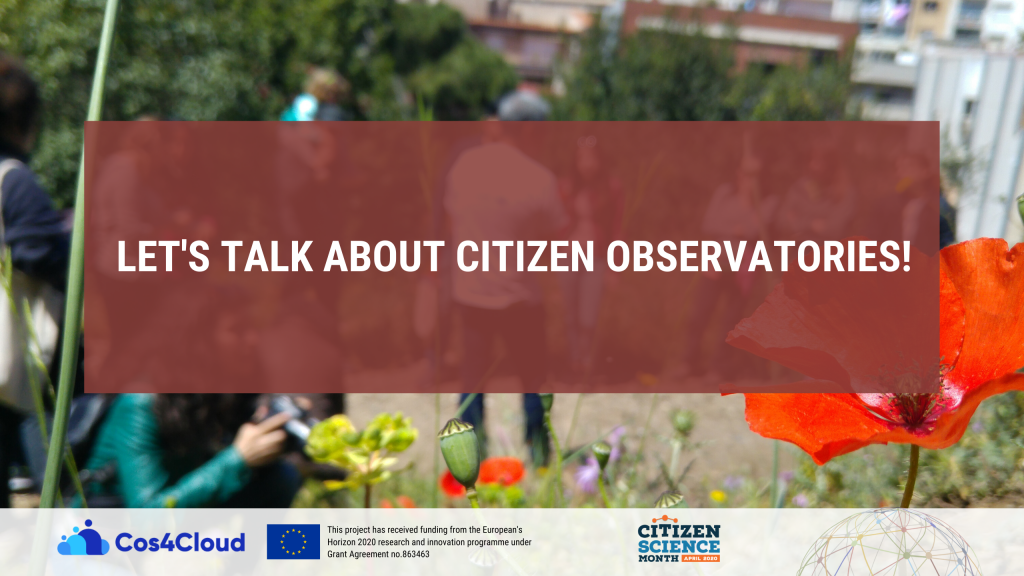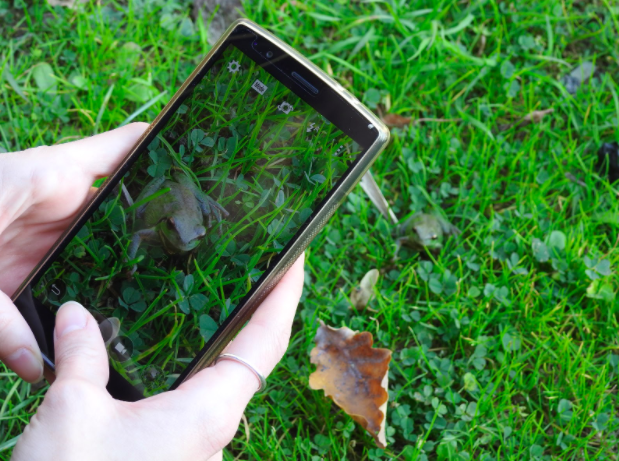
Last May 28th, in the framework of Cos4Cloud project we organized the webinar ‘Let’s talk about citizen observatories’. Here you have the essential points that we have identified after the webinar:
What is a ‘citizen observatory’?
Citizen science is not just about collecting data or public participation in scientific research, it’s also about citizen empowerment. While citizens generate information that can influence environmental management, they also learn scientific concepts in a didactic way. Nowadays, technology is a great ally for citizen science, an opportunity to increase public participation: a mobile can be an ally to monitor the environment, explore nature and even help to collect data of human diseases.
One of the things that one has to keep in mind when thinking about citizen science is that ‘citizen science’ and ‘citizen observatory’ are different things. Citizen observatories are part of the infrastructures in citizen science. An analogy would be: for doing research in the ocean you need vessels, for studying a cell you need a microscopy, and for doing citizen science you need a citizen observatory. Depending on the infrastructure or machine you have, you can set different types of studies.
‘Citizen Observatories’ name, has a European history, it comes out of the world of earth observations data. The idea is that people can be involved in collecting data on the ground and enrich all the information we know about environmental and earth issues, so citizen observatories are really focused on the community-based data gathering about any kind of environmental monitoring.

What citizen observatories have in common?
They share four main characteristics:
1) Participation of citizens in environmental monitoring and governance;
2) A bi-directional flow data information;
3)he enhancement of each observation system with citizen-generated observations ‘in-situ’; and
4) The use of modern mobile and web technologies to do so. There is even the opportunity to use co-design to involve citizens in the definition of the citizen observatory by the very beginning
Citizen observatories’ challenges
Citizen observatories face a relevant challenge, they need an interdisciplinary and intercultural approach and not just think about technology like a solution to building apps.
Another challenge is to improve the interoperability among observatories and data quality. There are a lot of observatories measuring different things and we need to find a ‘common vocabulary’, so they can share data. One of the possibilities to tackle it, it’s by creating communities of sharing practices.
In addition, it’s important to avoid the duplication of infrastructures. Citizen observatories should join efforts and think in long term about their sustainability. We need to address the citizen observatories challenges in a different way that we address the citizen science questions and find new models of funding. In many cases, you spend a big part of your budget developing the infrastructure, but then you’re not able to sustain the citizen observatory that you have built. A citizen observatory will take at least 10 years to evolve, collect and support different citizen science projects.
Citizen science role in crisis such as the coronavirus
In the current coronavirus situation, citizen science can be an ally to get fast response to help monitoring people infected by the virus. For instance, OpenSigma is a citizen science project that collects cough samples of COVID-19 patients and non-patients and tries to distinguish the differences in the cough with the help of artificial intelligence. At the end, its aim is to generate a model that is able to say if it is likely that you’re infected or not.
Citizen science also can help us to understand the environmental and social changes caused by the coronavirus. For example, answering the question: what was the environmental situation before the coronavirus, during the lockdown and once we get back to the new ‘normality’?
The webinar, organized by Cos4Cloud, took place on 28th of April. During the event we had the pleasure to listen to great citizen science experts such as: Jaume Piera (ICM-CSIC researcher, associate researcher at CREAF and Cos4Cloud’s coordinator) Karen Soacha (ICM-CSIC researcher and part of Cos4Cloud’s coordination team), Joan Masó (CREAF researcher and leader of the interoperability work package in Cos4Cloud), Margaret Gold (project officer of WeObserve at ECSA).
People of broad profiles and from different countries (Greece, Spain, Netherlands, Colombia, Hungary, Brazil and Germany) joined us for the webinar. This is a reflection of how citizen science should be: diverse and intercultural.

















